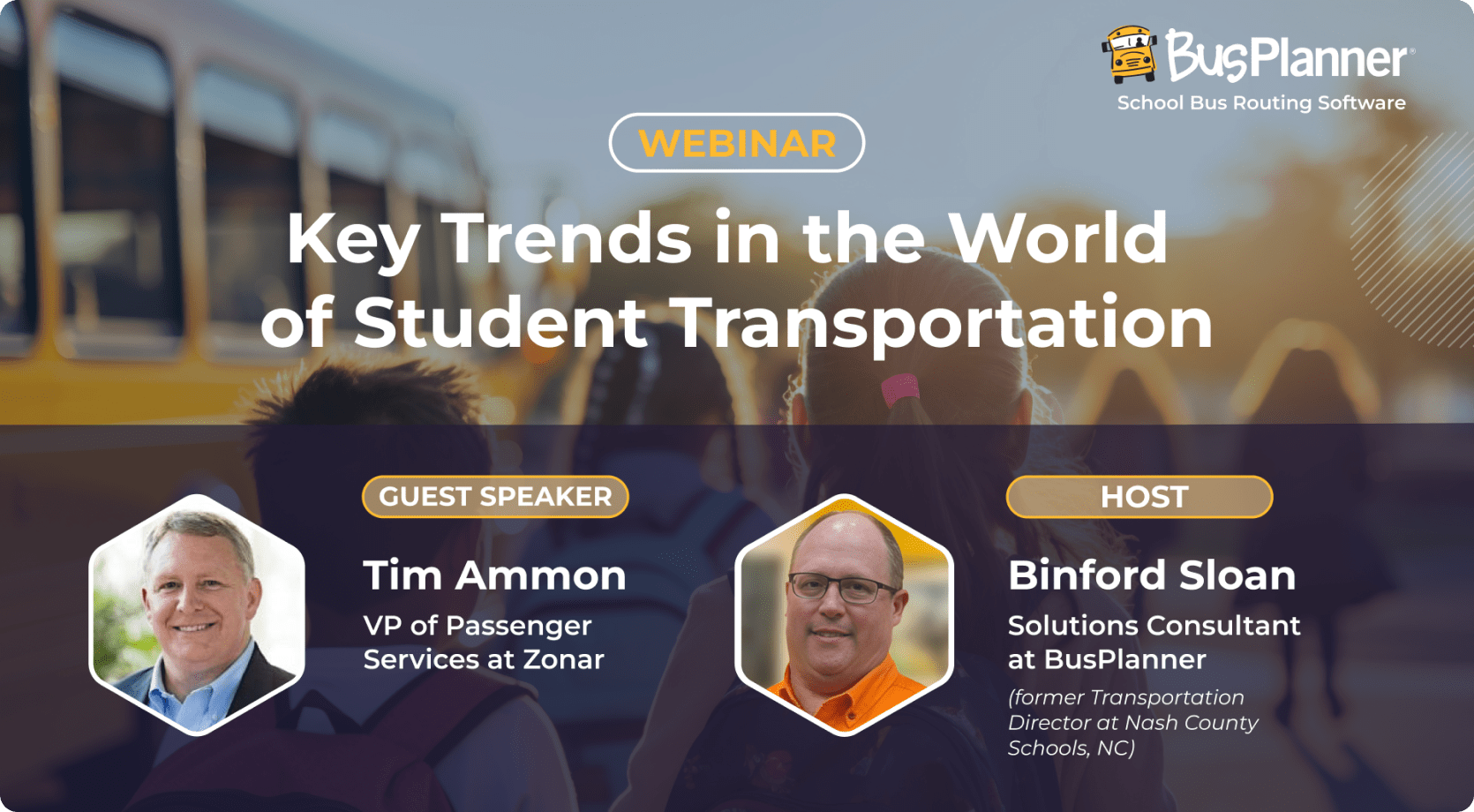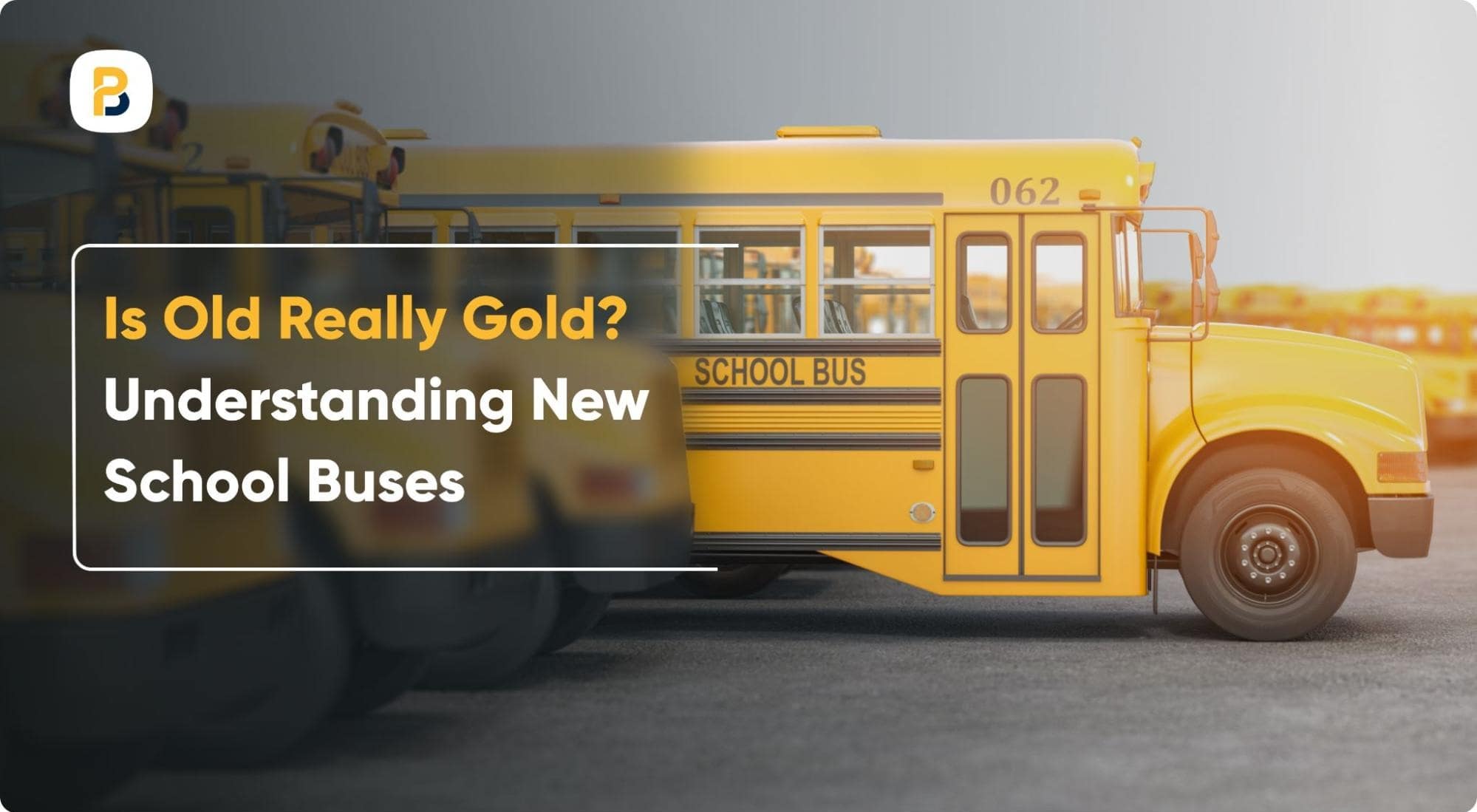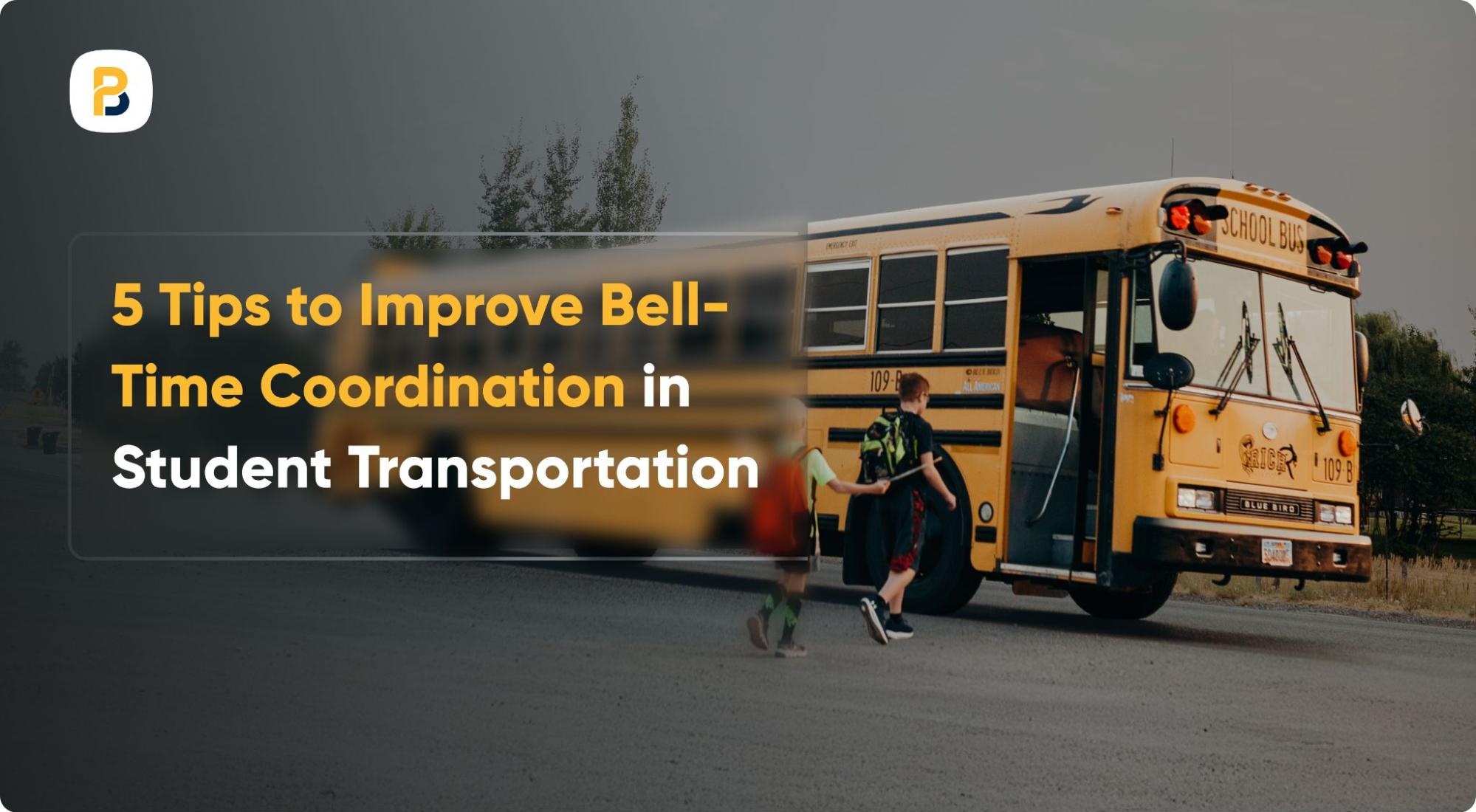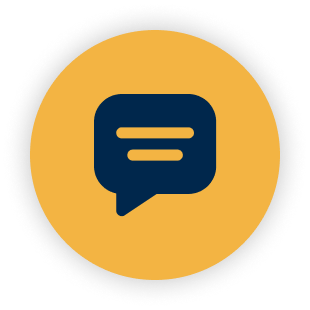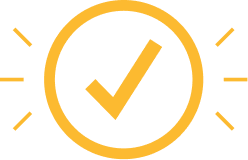The world of student transportation can be overwhelming — from figuring out why buses are running late to maintaining fleets, it can be difficult to juggle between different tasks. BusPlanner was honored to have Tim Ammon, VP of Passenger Services at Zonar Systems, join a webinar to discuss the latest trends in student transportation.
Tim Ammon was joined by Binford Sloan, Solutions Consultant at BusPlanner and former Transportation Director at Nash County Schools to discuss the following key topics:
- Enrollment changes
- Driver shortages
- Budget cuts
- Back to school preparations
- Importance of optimize
Trends in Enrollment Numbers
One of the most prominent challenges in the student transportation industry is the decline in public school enrollment. In an article published by NBC News, there is a decline in the number of students enrolled in public schools in 2022 compared to 2012.
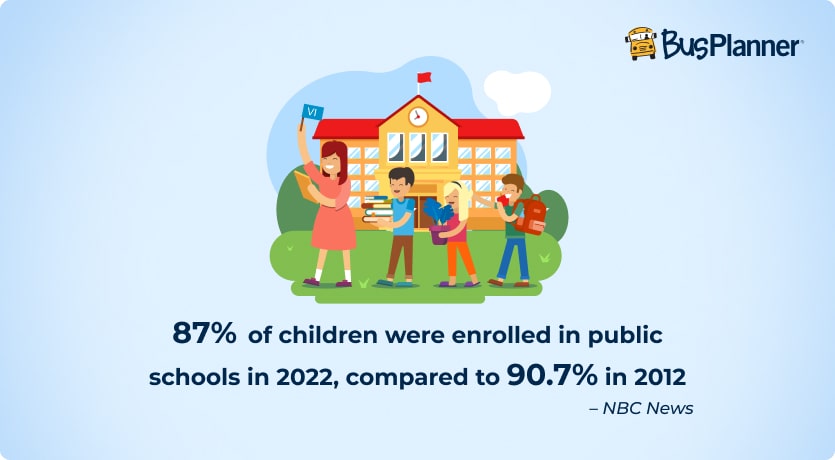
Tim Ammon shared his insights on the reduction in total enrollment. “We don’t know where these students went. We aren’t sure if they went to private, parochial schools, or opted for homeschooling. What we do know is that they’re not enrolled in public schools anymore. That has a pretty significant impact on the funding public schools receive,” he explained. There seems to be a correlation between the dropping enrollment and the COVID-19 pandemic.
With reductions in enrollment, many school transportation systems are unaware of how to utilize their buses to peak efficiency, Tim added. In the video below, Tim elaborates on the impact of decreasing enrollment on school bus routing efficiency.
Since many states allocate funds to schools based on total enrollment numbers, districts are losing money. This translates to lesser funding for both the education system and the transportation network for schools in that region.
The webinar attendees answered the following poll regarding student enrollment numbers at their school district:
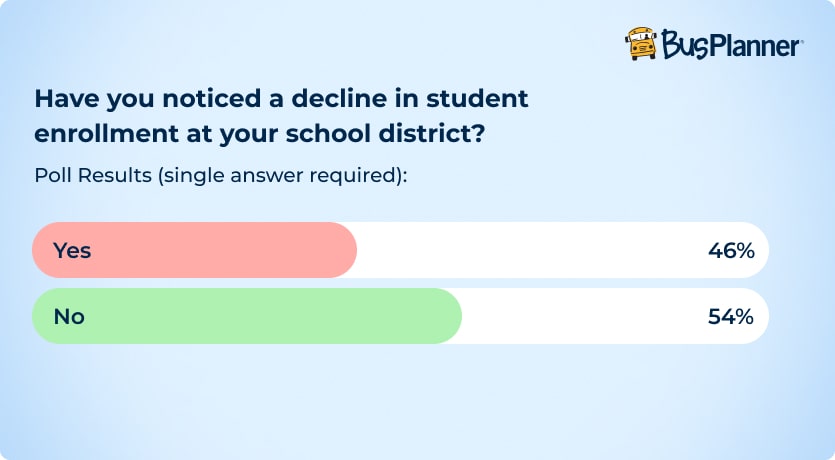
Key points:
- Just short of half (46%) of the respondents reported that they had noticed a decline in student enrollment in their school districts.
- Tim remarked that schools with significant enrollment changes may also be impacted by closures. An article by The74 reported that many school districts across the US experienced over 20% reduction in attendance during the pandemic.
- There’s an increase in regional transportation programs where many neighboring school districts share facilities.
Where Are the Bus Drivers?
Knowing how many buses a school district needs is a key part of improving operational efficiency. According to the Economic Policy Institute (EPI), both public and private schools have seen a decline in us driver employment.
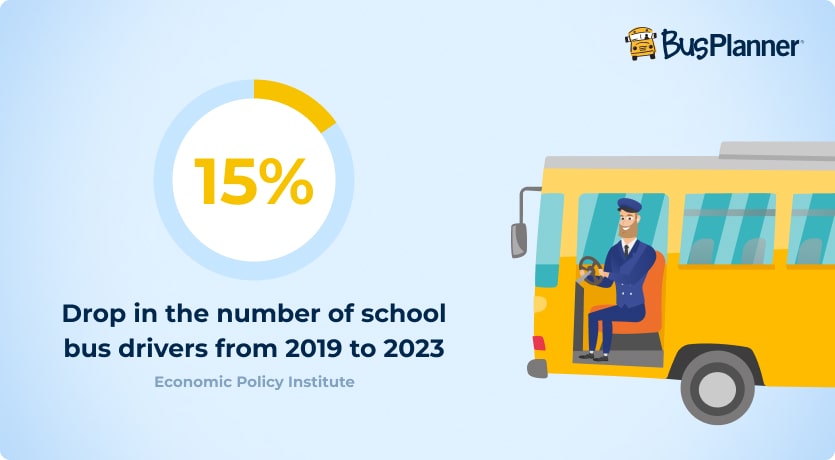
“One of the organizations we work with has had more success combatting the driver shortage with how they manage wages and compensation,” Tim explained.
Tim attributed rigid HR structures to be one of the key things that schools need to address, especially by evaluating individual, position-based compensation changes. “If school districts give bus drivers a $5/hour raise, they need to do the same for custodians, ground workers, and everyone else involved. The waterfall effect of that is pretty significant,” Tim elaborated.
Even though many school districts realize the need to increase bus driver wages, they’re unable to do so due to HR policies. Due to these district-specific policies, some transportation departments have more issues with the driver shortage than others.
In a poll, the webinar attendees answered the significance of the impact due to the school bus driver shortage. All participants of the survey reported they experienced some impact in their districts because of the driver shortage. 33% of the participants experienced a significant or severe impact due to the lack of bus drivers.
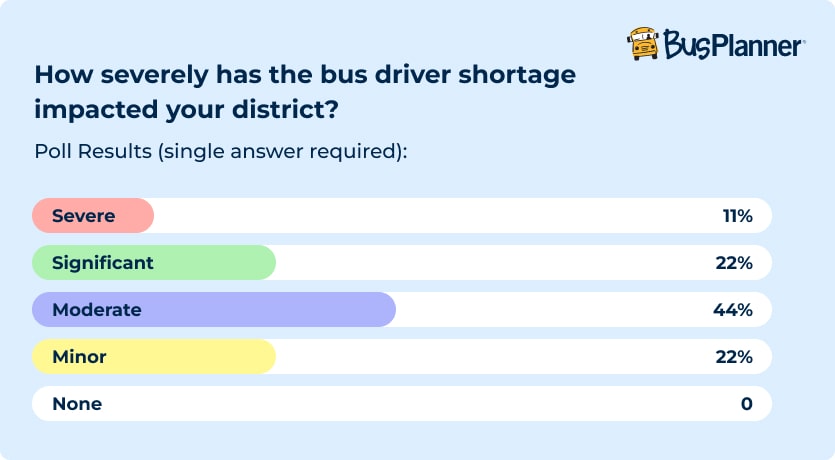
Understanding Budget Changes
Without maximizing time and seating capacity, school districts cannot effectively optimize their transportation operations. With the reduction in COVID funding, schools may struggle to provide bonuses to employees or invest in technology they need to operate more efficiently. Binford remarked that most school districts will find a way to keep these systems in place.
Why Need Optimization?
Understanding the ins-and-outs of a school district is crucial to manage operations efficiently. Optimization in the world of student transportation is very different from what people typically assume, as Tim explains in the video below:
In Binford’s experience of using BusPlanner as the Transportation Director at Nash County Schools, NC, it helped to use analytics to:
- Eliminate unnecessary stops
- Cut out redundant runs, which eventually turned into routes
Using tools like BusPlanner, school districts can analyze past trends and historical data to allow for compared vs. actual comparisons. Tim remarked that many school districts make the mistake of comparing the wrong things while optimizing.
“One of the things I think is really important while doing planned vs. actual is to be careful of what you’re comparing. Make sure you can understand what the variance is and what the deviation might be,” Tim said. He mentioned that it’s important to be wary of extraordinary circumstances, such as school events, while analyzing past ridership data.
The audience answered a poll about whether they used optimization tools at their school districts for planning routes. Based on the results, 75% of respondents used optimization tools.
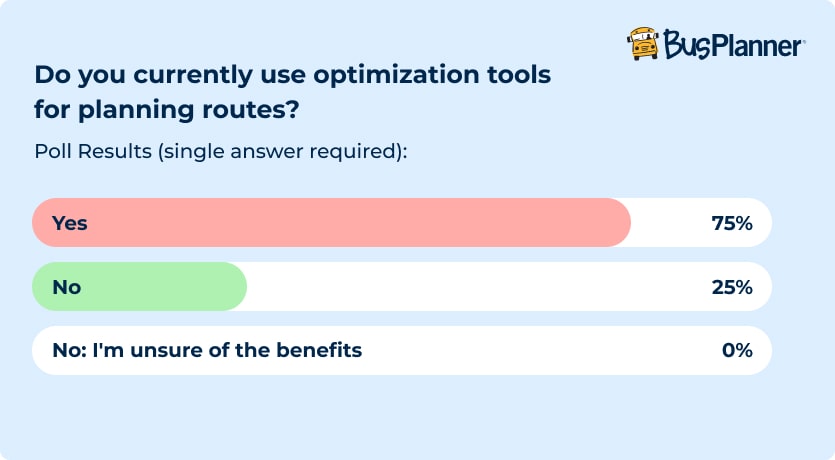
Back to School Preparations
“School start is about blocking and tackling,” Tim said. He went on to say that it’s more of a risk management problem, where it’s important to have the right pieces in place to prevent small issues from ballooning up.
The goal is to control uncertainty in an industry where there are so many moving parts. Adding on, Tim said that parents may be able to tolerate bus delays, but they can’t put up with not knowing. That’s where systems like BusPlanner are so important for stakeholder communication.
Recommendations
With their combined experience, Binford and Tim shared some important closing thoughts.
- Step 1: Keep your student information data in order.
- Step 2: Calibrate your maps and update them as changes happen throughout the year.
- Step 3: Go over all your stops and check if you need to move them strategically to boost efficiency.
The end goal is to provide education to as many children as possible. Improving the transportation system is the best way to do that, and tools like BusPlanner help attain that objective.
